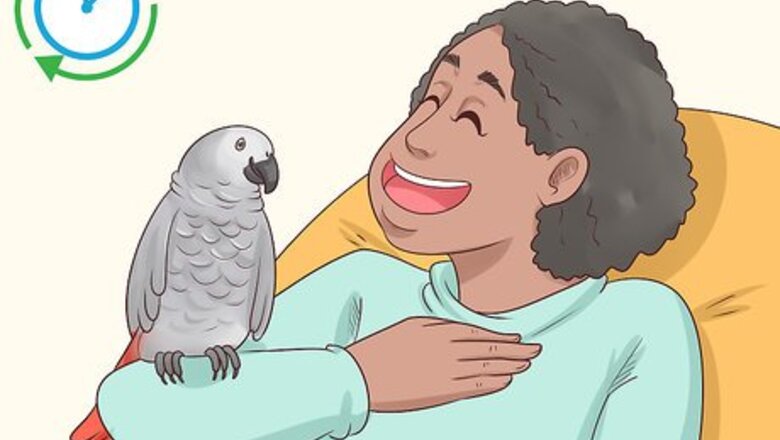
views
Spending Quality Time with Your Parrot
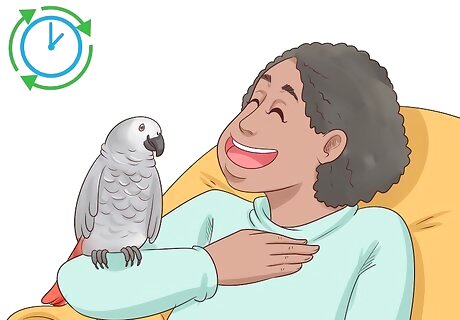
Spend lots of time with your parrot. African Greys are social, intelligent, and emotional animals, so you’ll need to spend lots of time with your pet. Talking, dancing, training, and playing with your parrot every day will help meet its needs. Just sitting in the same room can offer the social interaction it needs. Try not to leave your parrot alone for extended periods during the first year of its life. When you eventually do go out of town, have someone your parrot has already spent lots of time with house-sit or keep the bird at their home.
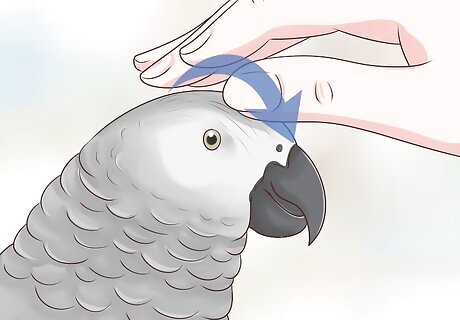
Stroke the feathers on its head toward its beak. Parrots enjoy being pet on the head, where itchy new feathers grow that it can’t reach. Scratch gently from the top of its head toward its beak to deepen your relationship with your pet. Make sure your parrot enjoys being stroked. Look for signs like fluffing its head feathers in excitement when you’re about to pet it. If it trembles, squats, or pants, it probably doesn’t like being touched. Petting from head to tail is typically either uncomfortable or interpreted as a mating behavior, so scratching is best kept to the head.
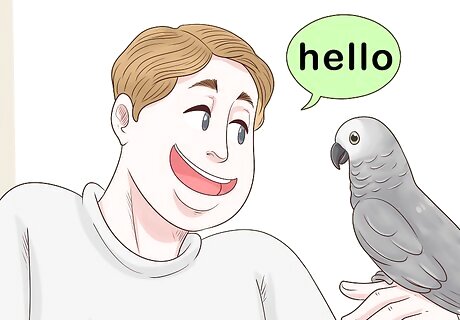
Try teaching your parrot to talk. African Greys are among the best-known talkers, and most have an easy time learning to mimic words. Start with simple words, like “hello” or “bird,” and repeat them over and over in front of your parrot. Speak clearly, have patience, and offer treats and plenty of praise when it finally does say a word.
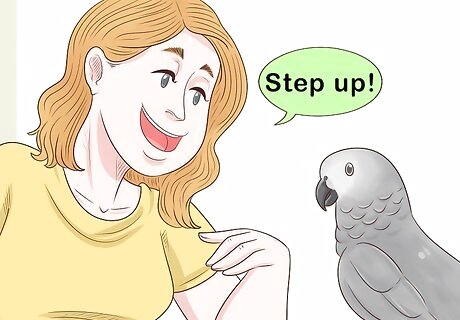
Train your parrot. In addition to teaching it to talk, basic training can help strengthen your bond and provide your pet with mental stimulation. Start with easy positive reinforcement. Give it lots of praise when you see it performing a desirable behavior, such as eating or playing with its toys. Then try teaching it basic tricks. Hold your arm in front of it like a perch, then say, “Step up!” When it hops onto your arm, give it a treat. Use the same technique to teach it a step-down command. You can also try clicker training your bird so it associates the sound of a clicker with good behavior and a reward.
Enriching Its Environment
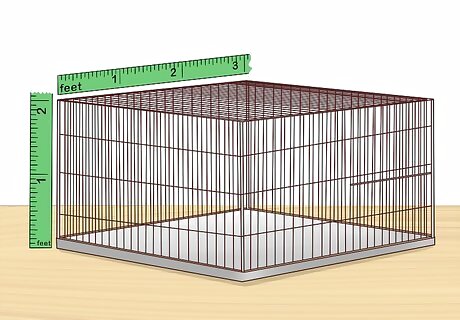
Make its enclosure as large as possible. A three feet by two feet by four feet (0.9 meter by 0.6 meter by 1.2 meters) cage is the minimum recommended size for an African Grey. However, bigger is better, so provide it with the largest enclosure you can accommodate. Some Grey owners even use small spare rooms as enclosures for their pets.
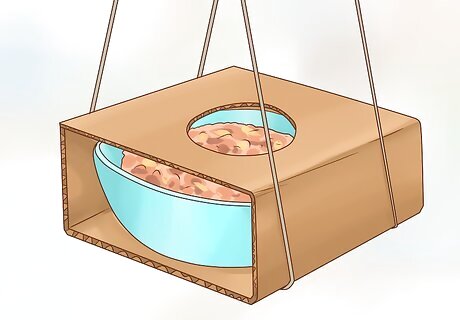
Hide treats to encourage it to forage. In its natural environment, an African Grey would spend time foraging for food. In addition to providing it with food bowls, hide treats throughout your bird’s habitat to keep it entertained. Try hiding seeds or a favorite treat in a container of pebbles. Wrap food bowls in cardboard or paper so your bird has to dig to get its food. You can also find food-dispensing puzzle toys for parrots online or at pet stores. You can also get your bird a foraging feeder that's designed to replicate how it would forage for food in the wild.
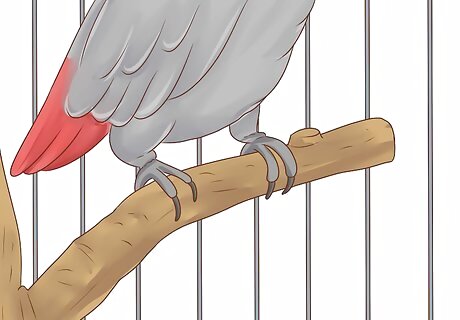
Mimic natural features instead of using straight perches. Simple dowel perches with ninety-degree angles can get boring. Instead, provide a variety of perches that mimic branches and other natural features. Perches that move or swing can also provide mental and physical exercise. Look for natural branch perches, such as manzanita wood perches, online or at a pet store. Avoid smooth, slippery perches and those covered with sandpaper.
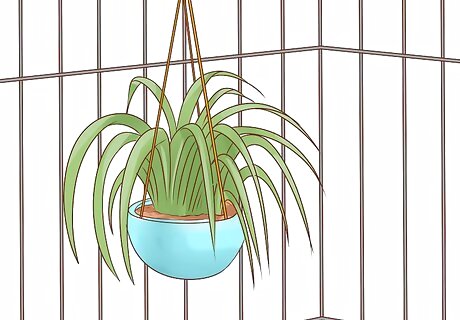
Keep nontoxic plants in your parrot’s enclosure. Plants that are safe for birds can also enrich your African Grey’s environment. Any plants you place in the enclosure should be free of pesticides and other chemicals. For example, spider plants and bamboo are bird safe and easy to grow. Kale is an attractive choice and can provide your parrot with nutrients. You can find extensive lists of safe and harmful plants online.
Providing It with Toys
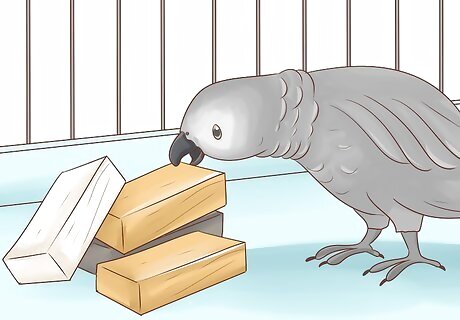
Give your parrot toys it can chew and destroy. Parrots instinctively like to chew and destroy wood. Wood scraps, paper, cardboard, and store-bought chew toys will help keep your African Grey entertained. An old woven wood basket from a thrift store can also provide an inexpensive parrot toy.
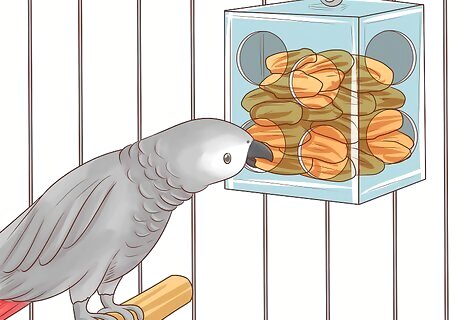
Provide it with puzzle toys. Look online or at your pet store for puzzle toys that dispense food, have moving parts, or make noise. In addition to encouraging your bird to forage, they’ll provide it with mental stimulation. Make sure any store-bought or homemade toys don’t have small, hard parts that can come off and pose a choking risk.
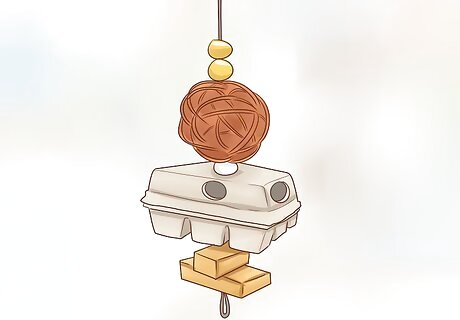
Make your own parrot toys. Try stacking decorative woven balls, pieces of egg cartons, and wood scraps on a stainless steel skewer. As a bonus, hide bits of fruits and vegetables throughout your makeshift toy. Other good homemade toy components include wads of newspaper or cardboard, large wooden popsicle sticks, and large buttons.
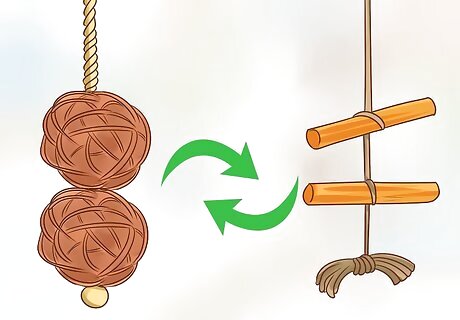
Rotate toys to keep your parrot stimulated. Every week or two, swap toys out with new ones or others from your parrot’s collection. Rotating toys will help prevent your parrot from getting bored with them. When introducing a new toy, play with your parrot and show it how to use the new toy. That way, it won’t shy away from the new object.

















Comments
0 comment